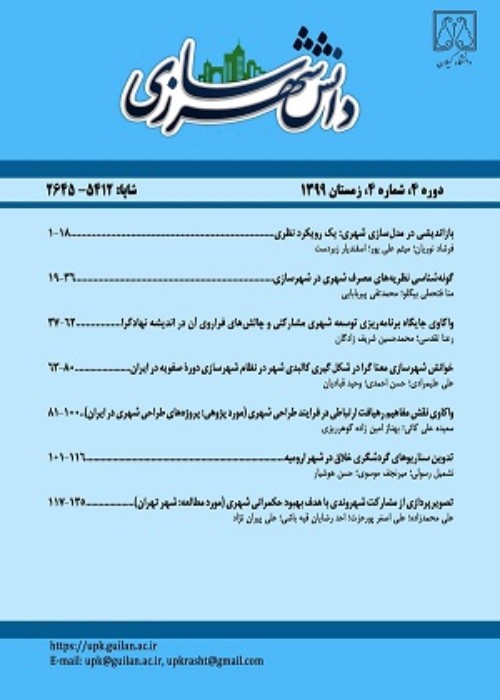Semantic Reading of the Safavid Period Urban Planning in the Formation of the City's Physical in Iran
In semantic urban planning in the Safavid period, urban spaces were not only considered a physical issue, but also known as a manifestation of mysterious meanings in order to the designer could materialize the spiritual messages in the body of the city as permitted by the passage of reality. We have experienced a spiritual crisis in the design of urban spaces in contemporary Iranian urban planning. Now the fundamental question is how can the concepts of explicit and implicit semantics be objectified in the formation of the city’s body?
The main purpose of this study is to read semantic urban planning in the Safavid period in the physical formation of Isfahan and its application in the physical construction of contemporary cities in Iran.
The present study in terms of objectives is fundamental and applied; In terms of nature and method is descriptive-analytical; In terms of data collection method is text mining of documents and field observations; and is qualitative in terms of data analysis.
Reflecting on the visual appearance of the city's spatial organization in the Safavid period, the manifestation of the material system (water order, plant order, soil order and air order) and the semantic system (sacred order) are clearly revealed. The passage of reality through the use of natural elements with formal and symbolic games in order to create a sense of place and this identity with space, unity, plurality and spatial coherence, etc. has been influenced by the semantic urbanism viewed it.
Urban development in the Safavid period was a reflection of the spatial translation of semantic criteria in order to integrate innovatively for its capabilities in responding to both physical, psychological and spiritual needs. In the current situation, the texture and physical construction of Iranian cities with emphasis on historical discontinuity and modernity following the transformation of form rather than content, shows the crisis of spirituality in its physical construction.
- حق عضویت دریافتی صرف حمایت از نشریات عضو و نگهداری، تکمیل و توسعه مگیران میشود.
- پرداخت حق اشتراک و دانلود مقالات اجازه بازنشر آن در سایر رسانههای چاپی و دیجیتال را به کاربر نمیدهد.



